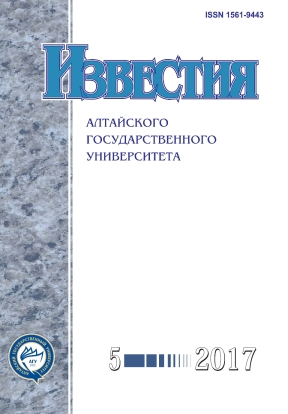Nomad Society and Features of Wedding Customs of the Kazakhs (Based on the Works of Pre-Revolutionary Russian Authors)
Abstract
The article considers the peculiarities of Kazakh wedding customs in the materials of the works of prerevolutionary Russian authors of the late 19th and early 20th centuries. According to the author, the process of formation of the Kazakhs’ ethnicity, and accordingly rituals, wedding traditions of the people is connected with the type of farming and lifestyle. In the researched period the Kazakh family institute, although influenced by the Tsar’s reforms, retained the traditional way of life with a large patriarchal family. This is evidenced by the fact that the peculiarity of the Kazakhs' residency was the accumulation of a large family-related group that wandered together and led a common household. The system of basic value orientations of the steppe people was formed according to the specifics of the economic system of the nomadic society. The peculiarity of the Kazakh family was that it preserved the patriarchal features of nomadic culture. The families of nomads were not isolated, they maintained unity while solving all problems, including family problems. For the Kazakh people, matchmaking, wedding are some of the most important customs. The thoroughness of their preparation, the fairly stable form of the wedding rite the strength of the ancient steppe customs, which due to the domination of the nomadic type of economy ensured the historical continuity of the sociocultural community of the people.
DOI 10.14258/izvasu(2017)5-20
Downloads
Metrics
References
Левшин А.И. Описание орд и степей казахов. — 2-е изд., доп. — Астана, 2007.
Красовский М.И. Образ жизни казахов степных округов. — 2-е изд., доп. — Астана, 2007.
Древний мир права казахов: материалы, документы и исследования : в 10 т. Алматы, 2006. Т. VII.
Гродеков Н.И. Этнография казахов и кыргызов Сыр-Дарьинской области. — 2-е изд., доп. — Астана, 2007.
Алтынсарин И. Собрание сочинений: в 3 т. — Алма-Ата, 1976. Т. II.
Валиханов Ч. Избранные произведения. — М., 1986.
Ибрагимов Ш.М. Очерки быта казахов. — 2-е изд., доп. — Астана, 2007.
Лысенко Ю.А. и др. Традиционное казахское общество в национальной политике Российской империи: концептуальные основы и механизмы реализации (XIX — начало XX в.). — Барнаул, 2014.
Абрамзон С.М. Киргизы и их этногенетические и историко-культурные связи. — Л., 1971.
Кисляков Н.А. Очерки по истории семьи и брака у народов Средней Азии и Казахстана. — Л., 1969.
Масанов Н. Кочевая цивилизация казахов: основы жизнедеятельности номадного общества. — Алматы, 1995.
Зиманов С. Политический строй Казахстана первой половины XIX века и Букеевское ханство. — Алматы, 2009.
Алексеенко Н.В. Население дореволюционного Казахстана. — Алма-Ата, 1981.
Первая всеобщая перепись населения Российской империи, 1897 г. Т. 84: Семипалатинская область. — СПб., 1905.
Copyright (c) 2017 А.А. Абенова

This work is licensed under a Creative Commons Attribution 4.0 International License.
Izvestiya of Altai State University is a golden publisher, as we allow self-archiving, but most importantly we are fully transparent about your rights.
Authors may present and discuss their findings ahead of publication: at biological or scientific conferences, on preprint servers, in public databases, and in blogs, wikis, tweets, and other informal communication channels.
Izvestiya of Altai State University allows authors to deposit manuscripts (currently under review or those for intended submission to Izvestiya of Altai State University) in non-commercial, pre-print servers such as ArXiv.
Authors who publish with this journal agree to the following terms:
- Authors retain copyright and grant the journal right of first publication with the work simultaneously licensed under a Creative Commons Attribution License (CC BY 4.0) that allows others to share the work with an acknowledgement of the work's authorship and initial publication in this journal.
- Authors are able to enter into separate, additional contractual arrangements for the non-exclusive distribution of the journal's published version of the work (e.g., post it to an institutional repository or publish it in a book), with an acknowledgement of its initial publication in this journal.
- Authors are permitted and encouraged to post their work online (e.g., in institutional repositories or on their website) prior to and during the submission process, as it can lead to productive exchanges, as well as earlier and greater citation of published work (See The Effect of Open Access).








